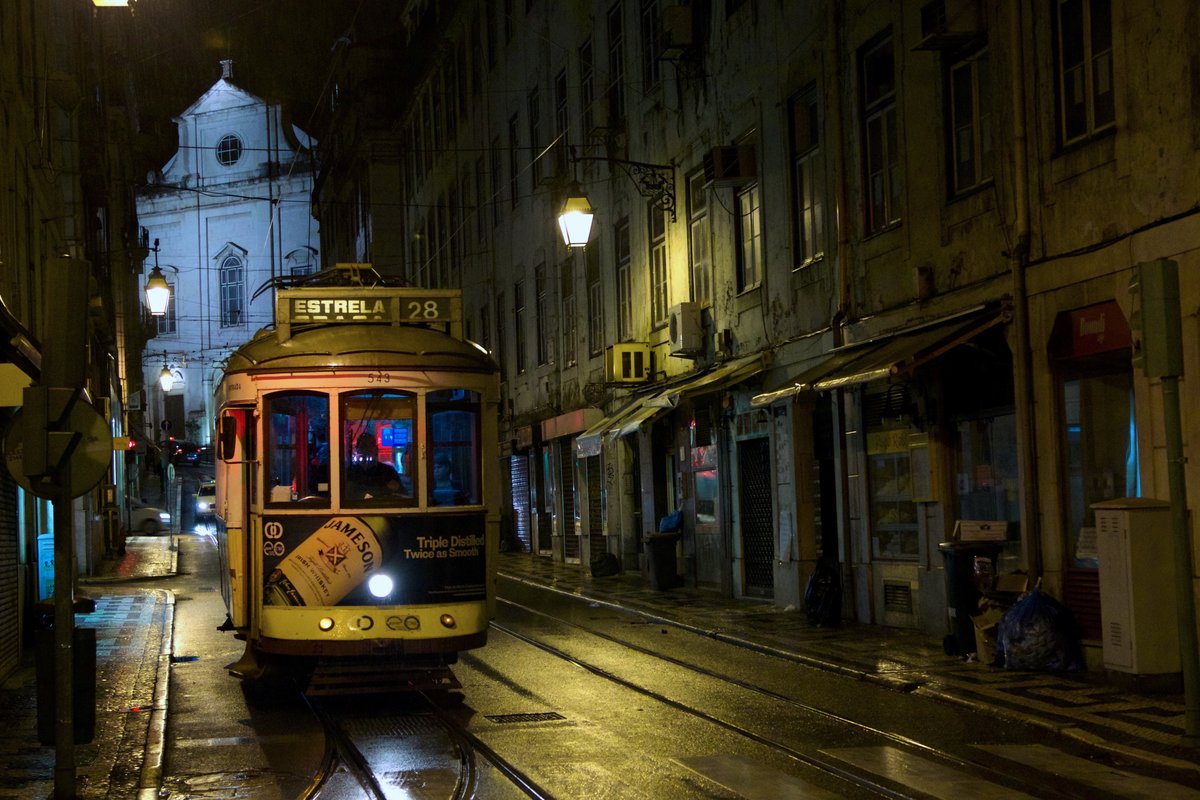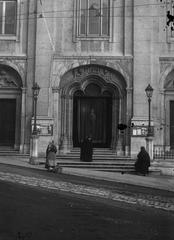
Igreja da Madalena Lisbon: Visiting Hours, Tickets, and Historical Site Guide
Date: 15/06/2025
Introduction
Igreja da Madalena, or the Church of Saint Mary Magdalene, stands as a testament to Lisbon’s centuries-old history and cultural resilience. Originally commissioned by King Afonso Henriques in the aftermath of the Christian reconquest of Lisbon in 1147, this remarkable church has survived fires, cyclones, and the devastating 1755 Lisbon earthquake. Its rich architectural tapestry, featuring Romanesque, Gothic, Baroque, Late Renaissance, and Manueline elements, mirrors the city’s evolving identity. Today, Igreja da Madalena is recognized as a National Monument, with its Manueline portal celebrated for its intricate Portuguese Late Gothic stonework (viajeraymochilero.com, allaboutportugal.pt, Wikipedia).
Located where the Baixa and Alfama districts meet, the church offers a peaceful space for reflection and worship, while serving as a gateway to Lisbon’s historic heart. Inside, visitors will discover noteworthy 18th-century paintings by Pedro Alexandrino and sculptures attributed to Machado de Castro. Accessibility and free entry make Igreja da Madalena an inviting destination for all, and its proximity to landmarks like Lisbon Cathedral, Castelo de São Jorge, and Elevador de Santa Justa enhances its appeal (Lisbon Portugal Tourism, Visit Lisboa).
This comprehensive guide explores the church’s layered history, architectural features, visitor information, and practical tips to ensure a memorable and respectful visit.
Contents
- Origins and Early History
- Medieval Destruction and Rebuilding
- The 1755 Earthquake and Reconstruction
- Architectural and Artistic Highlights
- Visiting Hours, Tickets, and Accessibility
- Nearby Attractions
- Visitor Etiquette & Tips
- Frequently Asked Questions (FAQ)
- Visuals and Media
- Summary & Recommendations
- Sources
Origins and Early History
The foundation of Igreja da Madalena dates to the mid-12th century, following King Afonso Henriques’ conquest of Lisbon. Built between 1150 and 1164, the church was dedicated to Saint Mary Magdalene, reflecting the city’s new Christian identity (viajeraymochilero.com).
Medieval Destruction and Rebuilding
Throughout its history, the church has endured several disasters. A major fire in 1363 led to a Gothic-style reconstruction under King Ferdinand I. In 1600, a cyclone inflicted further damage, resulting in additional repairs and reinforcing the local community’s commitment to the church’s preservation.
The 1755 Earthquake and Reconstruction
The catastrophic 1755 Lisbon earthquake destroyed much of the city, including Igreja da Madalena. Reconstruction was ordered by Queen Maria I and completed in 1783, integrating the Manueline portal salvaged from the former Conceição dos Freires Church. This portal has since been recognized as a National Monument, representing a direct link to Lisbon’s pre-earthquake artistic legacy (allaboutportugal.pt).
Architectural and Artistic Highlights
Façade and Manueline Portal
The church’s relatively plain Late Renaissance and Baroque façade, rebuilt in 1783, contrasts with the ornate Manueline portal—Lisbon’s finest example of Portuguese Late Gothic craftsmanship. This trefoil-arched doorway, adorned with maritime motifs and intricate carvings, was preserved through centuries of upheaval and is a focal point for visitors (Wikipedia, Spotting History).
Roman Stones
Embedded in a nearby building’s façade, four Roman stones discovered during 18th-century reconstruction suggest the site’s ancient roots and highlight Lisbon’s multicultural Roman era (Lisbon Portugal Tourism).
Interior: Artworks and Features
Inside, the nave’s painted ceiling in soft pastels, gilded Baroque altarpiece, and religious sculptures (including works by Machado de Castro) create a serene atmosphere. The church’s azulejos—traditional blue-and-white tiles—depict biblical scenes and saints, while side chapels and the sacristy showcase further artistic details (The Geographical Cure, Lisbon Portugal Tourism).
Visiting Hours, Tickets, and Accessibility
- Opening Hours:
- Monday to Saturday: 9:00 AM – 7:00 PM
- Sunday: 9:00 AM – 1:00 PM (primarily for Mass)
- Entry: Free of charge; donations are welcomed.
- Accessibility:
- Wheelchair accessible entrance; some interior areas may be challenging due to historic architecture and cobbled streets.
- Guided Tours:
- Occasional guided tours are available; many free walking tours include the church in their routes.
- Photography:
- Discreet photography is allowed outside Mass times.
For up-to-date details, always check the official website or local tourist information (Visit Lisboa).
Nearby Attractions
Igreja da Madalena’s central location provides easy access to:
- Sé de Lisboa (Lisbon Cathedral): Romanesque-Gothic cathedral, 2 minutes’ walk.
- Arco da Rua Augusta: Iconic triumphal arch, 5 minutes’ walk.
- Elevador de Santa Justa: 19th-century lift, about 7 minutes away.
- Castelo de São Jorge: Hilltop castle with panoramic views, 10–15 minutes’ walk.
- Casa dos Bicos: Renaissance building housing the José Saramago Foundation, 4 minutes away.
- Church of Nossa Senhora da Conceição Velha: Three minutes away, another historical church.
Suggested Walking Route: Start at Igreja da Madalena, continue to Lisbon Cathedral, then visit Arco da Rua Augusta and Elevador de Santa Justa for a comprehensive tour.
Visitor Etiquette & Tips
- Dress Code: Modest attire (shoulders and knees covered) is recommended.
- Conduct: Maintain a quiet demeanor, especially during services. Attend Mass or spend time in contemplation to appreciate the spiritual ambiance.
- Best Time to Visit: Early mornings or late afternoons are quieter.
- Weather: Summers can be hot; bring water and sun protection.
- Local Food: Enjoy a pastel de nata at a nearby bakery after your visit.
- Amenities: No restrooms inside; use nearby cafés or public facilities.
Frequently Asked Questions (FAQ)
Q: Is there an entrance fee or tickets required?
A: No; entry is free, and donations are appreciated.
Q: What are the official visiting hours?
A: Monday to Saturday, 9:00 AM – 7:00 PM; Sunday, 9:00 AM – 1:00 PM.
Q: Is photography allowed inside?
A: Yes, but discreetly and outside Mass times.
Q: Is the church wheelchair accessible?
A: The entrance is accessible; some surrounding streets are cobbled.
Q: Are guided tours available?
A: No official in-house guided tours, but the site is featured on many city walking tours.
Visuals and Media
- Images:
- Manueline portal (“Manueline portal of Igreja da Madalena in Lisbon”)
- Painted ceiling (“Painted ceiling inside Igreja da Madalena, Lisbon”)
- Roman stones (“Roman stones near Igreja da Madalena, Lisbon”)
- Interactive Media:
- Recommend including interactive maps and virtual tour links for enhanced planning.
Summary & Recommendations
Igreja da Madalena is a must-visit destination in Lisbon for history enthusiasts, art lovers, and spiritual seekers. Its harmonious blend of Romanesque, Gothic, Baroque, and Manueline elements, coupled with a serene atmosphere and central location, offers a unique glimpse into Lisbon’s enduring spirit. Free admission, accessibility, and proximity to other major landmarks make it an ideal addition to any itinerary. For the best experience, visit during quieter hours, respect the sacred setting, and consider joining a walking tour to discover more of Lisbon’s heritage.
Sources
- Igreja da Madalena Lisbon: History, Visiting Hours, Tickets & Nearby Attractions (viajeraymochilero.com)
- Igreja da Madalena, Lisbon National Monument Details (allaboutportugal.pt)
- Igreja da Madalena, Lisbon Portugal Tourism (Lisbon Portugal Tourism)
- Igreja da Madalena Wikipedia (Wikipedia)
- Igreja Da Madalena, Visit Lisboa (Visit Lisboa)
For more travel tips and historical guides, download the Audiala app and follow us on social media for the latest updates on Lisbon’s heritage sites.



























































